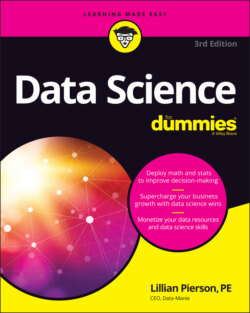Читать книгу Data Science For Dummies - Lillian Pierson - Страница 38
Using serverless computing to execute data science
ОглавлениеWhen we talk about serverless computing, the term serverless is quite misleading because the computing indeed takes place on a server. Serverless computing really refers to computing that’s executed in a cloud environment rather than on your desktop or on-premise at your company. The physical host server exists, but it's 100 percent supported by the cloud computing provider retained by you or your company.
One great tragedy of modern-day data science is the amount of time data scientists spend on non-mission-critical tasks like data collection, data cleaning and reformatting, data operations, and data integration. By most estimates, only 10 percent of a data scientist's time is spent on predictive model building — the rest of it is spent trying to prepare the data and the data infrastructure for that mission-critical task they’ve been retained to complete. Serverless computing has been a game-changer for the data science industry because it decreases the down-time that data scientists spend in preparing data and infrastructure for their predictive models.
Earlier in this chapter, I talk a bit about SaaS. Serverless computing offers something similar, but this is Function as a Service (FaaS) — a containerized cloud computing service that makes it much faster and simpler to execute code and predictive functions directly in a cloud environment, without the need to set up complicated infrastructure around that code. With serverless computing, your data science model runs directly within its container, as a sort of stand-alone function. Your cloud service provider handles all the provisioning and adjustments that need to be made to the infrastructure to support your functions.
Examples of popular serverless computing solutions are AWS Lambda, Google Cloud Functions, and Azure Functions.
